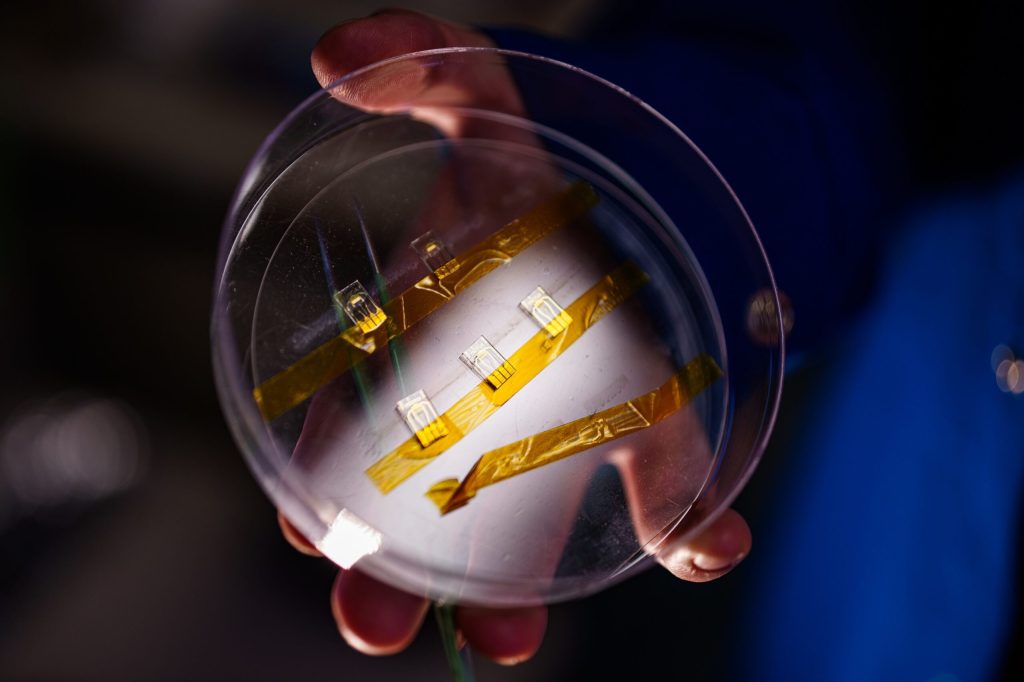Imagine a device that works like a smoke detector, but instead of alerting you to smoke, it detects dangerous chemicals in places like public transportation areas.
Researchers at Sandia National Laboratories have been working on creating a low-power sensor that can detect sarin, a deadly nerve agent, along with other chemical warfare agents or toxic industrial gases.
Sarin is a highly toxic nerve agent that can cause death within minutes. While its production and storage are prohibited, it has been used in terrorist attacks.
The sensor developed by Sandia uses a sponge-like material that traps sarin and similar chemicals. This material, called a sol-gel, is sprayed onto a structure that looks like metal combs with interleaved teeth. When a molecule of sarin binds to the sol-gel, it changes the material’s electric properties, which is detected by the sensor using minimal power.
To convert these chemical signals into electronic signals, the Sandia team collaborated with experts from the University of Virginia to design a readout integrated circuit. This circuit can detect changes in the sol-gel and convert them into useful signals while consuming very little power.
The sensor system has been successfully tested and the team is now exploring further funding to continue developing long-lasting chemical sensors. This system could potentially be adapted to detect multiple chemicals in the future, providing valuable alerts for public safety.


